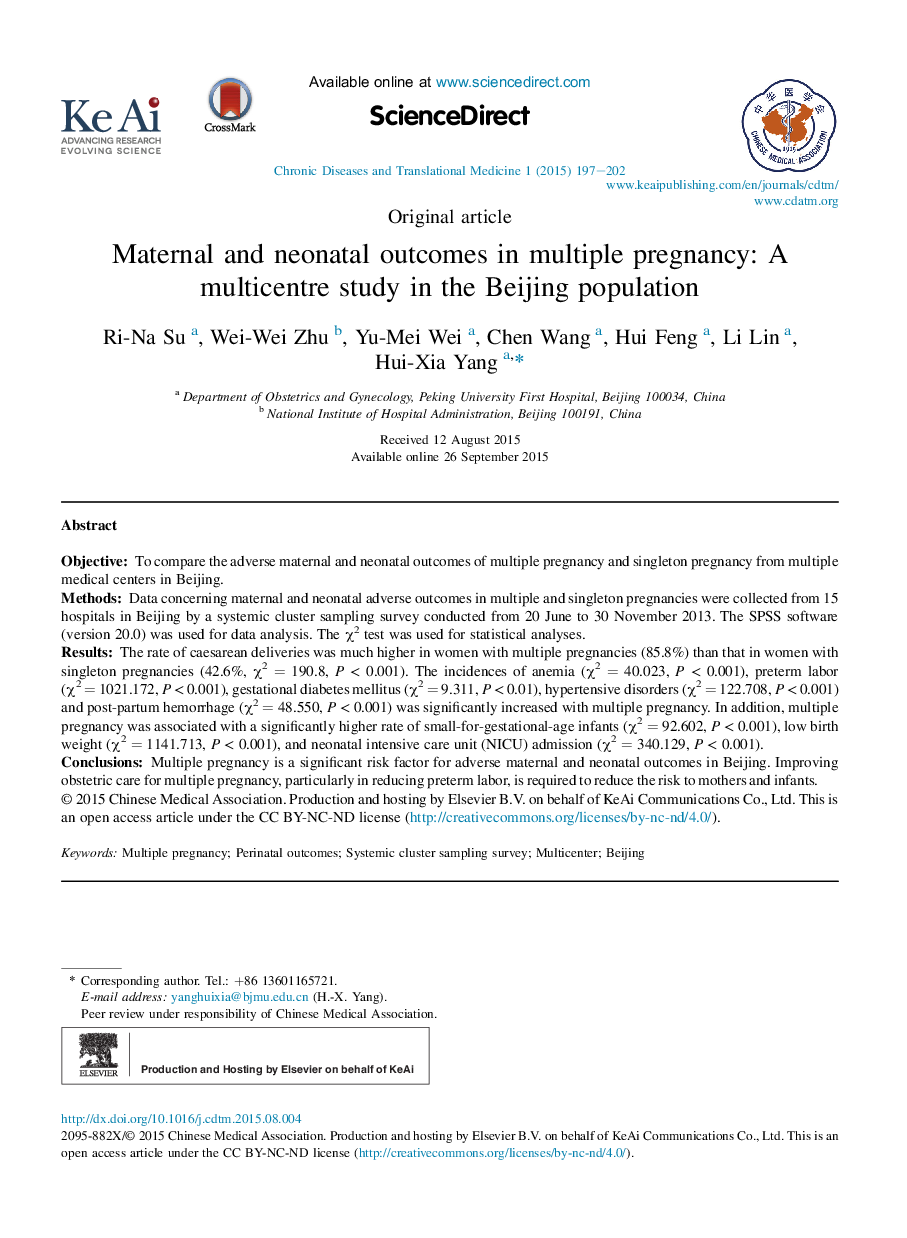| Article ID | Journal | Published Year | Pages | File Type |
|---|---|---|---|---|
| 3459913 | Chronic Diseases and Translational Medicine | 2015 | 6 Pages |
ObjectiveTo compare the adverse maternal and neonatal outcomes of multiple pregnancy and singleton pregnancy from multiple medical centers in Beijing.MethodsData concerning maternal and neonatal adverse outcomes in multiple and singleton pregnancies were collected from 15 hospitals in Beijing by a systemic cluster sampling survey conducted from 20 June to 30 November 2013. The SPSS software (version 20.0) was used for data analysis. The χ2 test was used for statistical analyses.ResultsThe rate of caesarean deliveries was much higher in women with multiple pregnancies (85.8%) than that in women with singleton pregnancies (42.6%, χ2 = 190.8, P < 0.001). The incidences of anemia (χ2 = 40.023, P < 0.001), preterm labor (χ2 = 1021.172, P < 0.001), gestational diabetes mellitus (χ2 = 9.311, P < 0.01), hypertensive disorders (χ2 = 122.708, P < 0.001) and post-partum hemorrhage (χ2 = 48.550, P < 0.001) was significantly increased with multiple pregnancy. In addition, multiple pregnancy was associated with a significantly higher rate of small-for-gestational-age infants (χ2 = 92.602, P < 0.001), low birth weight (χ2 = 1141.713, P < 0.001), and neonatal intensive care unit (NICU) admission (χ2 = 340.129, P < 0.001).ConclusionsMultiple pregnancy is a significant risk factor for adverse maternal and neonatal outcomes in Beijing. Improving obstetric care for multiple pregnancy, particularly in reducing preterm labor, is required to reduce the risk to mothers and infants.
